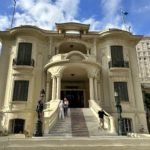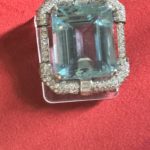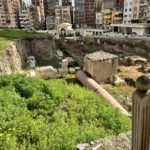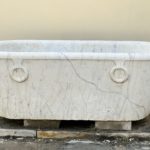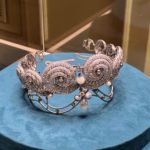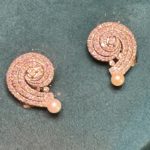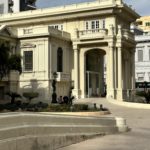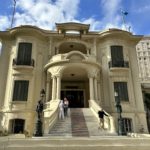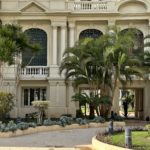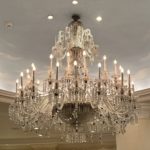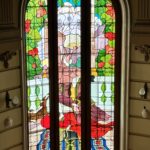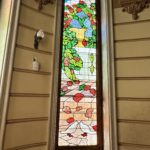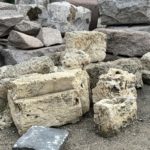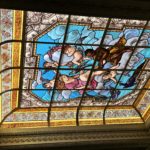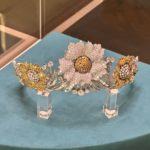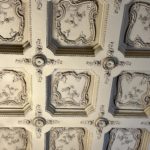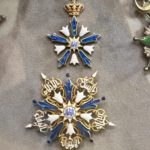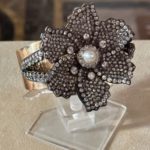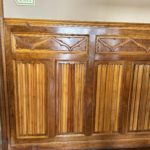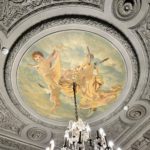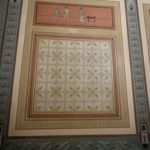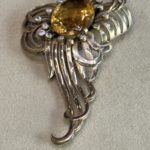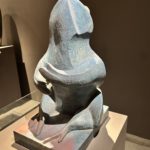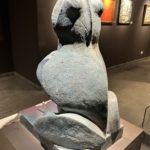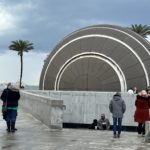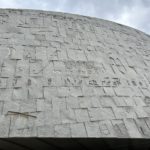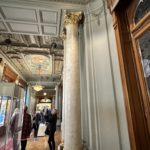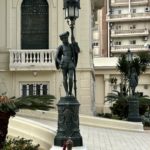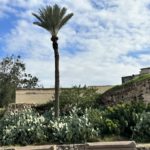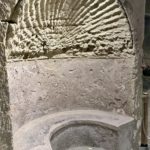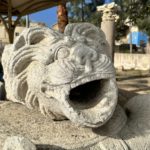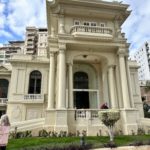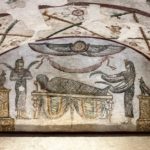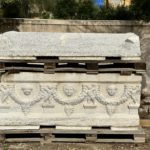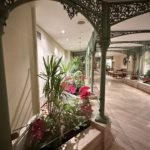Oak Bay After breakfast, we began our exploration of Alexandria’s historical treasures. We started
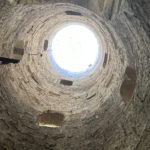
buy cheap neurontin From the bottom looking up
with the underground catacombs of Kom el Shoqafa (Mound of Shards), an extensive subterranean burial site that dates to the Greco-Roman era of the 2nd century. Many of the features of the catacombs merge Roman, Greek, and Egyptian cultures; for example, some statues , reliefs, and frescoes are Egyptian in style, yet bear Roman clothes and hairstyles. The location of the site had long been lost and was only rediscovered in 1900 when an unfortunate donkey stumbled into one of the shafts. Dug into the rock to a depth of about 115 feet, the complex has three levels. However flooding has made the lowest level inaccessible. The catacombs are reached by a spiral staircase encircling a shaft down which bodies of the deceased were lowered. On the first level there is central rotunda and a large banquet hall, the triclinium, where friends and relatives gathered to pay their last respects. To the east of the rotunda is the Caracalla Hall, an older burial complex that became accessible from the main chamber when robbers broke through the wall. This area is dedicated to Nemesis, the goddess of sport. From the central rotunda, stairs lead down to a second story with a vestibule and burial chamber. Here the decorated sarcophagi and wall reliefs display a mixture of Egyptian, Greek, and Roman styles: by the doorway, Anubis, god of the dead, is depicted as a Roman legionary with a dragon’s tail. On either side of the burial chamber, below heads of Medusa, are carved two serpents wearing the double crown of Egypt. From the burial chamber, eerie passages lead off in all directions to rooms containing 300 loculi – small chambers for bodies. Back above ground, the enclosure is strewn with sarcophagi and broken remains of sphinxes. In addition, a tomb from Tigard (about 5 miles away) has been relocated here and its frescoes are in excellent condition.
We visited Alexandria’s tallest monument, Pompey’s Pillar. Dating to the 4th century, it stands 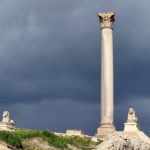 100 feet tall and 30 feet wide and was hewn from a single block of red granite brought all the way from Aswan, almost 700 miles away. It was erected around AD 297 in tribute to Roman emperor Diocletian. On its base in Greek is written “to the most just of emperors, the divine protector of Alexandria, Diocletian the invincible: Postumus, prefect of Egypt. The monument’s popular name may have come from medieval travelers who thought that Pompey (Roman General murdered in Egypt in 48 BC) was buried here. But, the pillar came from the Serapeum complex which was built in mid 3rd century BC. It is all that remains of the temple of Serapis which was once a repository of important religious texts and the “daughter” library of that of Alexandria. They are attempting to recover more of the site and you can see the bases of the columns of temple and visit the sanctuary.
100 feet tall and 30 feet wide and was hewn from a single block of red granite brought all the way from Aswan, almost 700 miles away. It was erected around AD 297 in tribute to Roman emperor Diocletian. On its base in Greek is written “to the most just of emperors, the divine protector of Alexandria, Diocletian the invincible: Postumus, prefect of Egypt. The monument’s popular name may have come from medieval travelers who thought that Pompey (Roman General murdered in Egypt in 48 BC) was buried here. But, the pillar came from the Serapeum complex which was built in mid 3rd century BC. It is all that remains of the temple of Serapis which was once a repository of important religious texts and the “daughter” library of that of Alexandria. They are attempting to recover more of the site and you can see the bases of the columns of temple and visit the sanctuary.
We visited the Bibliotheca Alexandrina, built in 2002 as a worthy successor to the lost Ancient Wonder of the Great Library of Alexandria, the extraordinary library and cultural center contains millions of books in English, French, and classical Arabic, as well as four museums, including a planetarium. The main library is encased in a giant cylindrical building at the northern end of the corniche. The circular outer wall is made of Aswan granite engraved with letters from all of the world’s alphabets. The partly glazed roof which tilts toward the sea is designed to angle sunlight on the desks of the 2,000 seat reading rooms, which we noticed were in extensive use today.
Our day contained scattered showers, sometimes on the way in and sometimes on the way out and temperatures only 60 degrees as a high. We enjoyed a grilled seafood lunch at a seaside Mediterranean seafood restaurant. Then, we continued our exploration of Alexandria.
This afternoon, we ended our afternoon with the group with a visit to the Royal Jewelry Museum, home to the vast collections of jewelry (most collected from the mid 19th century to 1952) and acquired by the royals of Egypt’s Muhammad Ali Dynasty. The building was originally constructed for Mohammed Ali’s grand-daughter, Princess Fatima el-Zaharaa (1903-1983) and later used as a palace by King Farouk. Key pieces include a gold snuff box with Mohammed Ali’s name spelled out in diamonds, King Farouk’s gold and diamond-studded chess set, and a platinum crown glittering with well over 2,000 diamonds. The palace is decorated with stained glass vignettes of life in 18th century France. A Ladies bathroom is tiled with scene’s of nymphs bathing in Alpine surrounds; while the men’s is tiled with scenes of French fishermen and seagulls. Mike took a video of the bathroom!

The Four Seasons Hotel in Alexandria from the “beach”
Once back at the hotel, we took a walk to the beach in the sun and were confronted by a sand dune constructed to protect the beach level villas from the sea about 16 feet high. The grounds are beautifully manicured around these villas which are actually condominiums for the wealthy to spend the summer months in Alexandria, where the temperature is mostly in the 90’s.
Afterwards, we accessed a multi-story mall connected to the ground level of our hotel. It was a typical mall with a food court, shops, perfumeries, and even a fresh food grocery store reminiscent of the Grand Epicurean in Paris. Returning empty-handed, we decided to enjoy the remaining afternoon on our balcony and prepare for our departure from Alexandria tomorrow.


